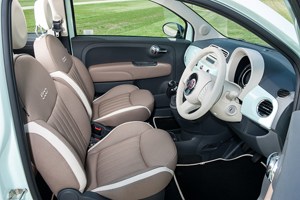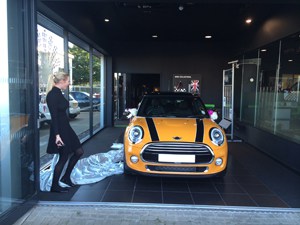A recent report from CAP Automotive has revealed that the number of new car derivatives introduced annually has quadrupled in the past five years, leading to a huge boost in the price of new cars.
The firm’s data shows that the number of new car derivatives brought to market has risen from 1,083 during 2009 to an incredible 4,403 last year.
Halfway through 2014 the number of new derivatives added to CAP Automotives database stood at more than 2,500. However from this data we were then able to reveal that more than 800 different derivatives of medium family cars have been launched into the market so far this year.
Beginning to feel like we have too much choice?
Let’s take a look at the mini segment. The small ‘runabout’ city car sector is where things are really exploding, with twice as many new car derivatives introduced so far in 2014 than during the whole of last year. Now all this choice in hindsight sounds great, everyone loves choice, however how many of us realise that all this choice is only increasing the margins on new cars and making them more expensive?

In January 2009 the average price of a city car was £8,225. By July 2014 that figure had risen to £10,400. That’s a difference of £2,175 over 5 years!
The supermini follows in very much the same footsteps with one costing you £10,770 5 years ago, now retailing for £12,783.
There is a much stronger focus on the smaller car market, where some of the widest selection of choices can now be found. It used to be the case that if you wanted a typical prestige small car, then there was no option for a larger hatchback or saloon. Nowadays that isn’t the case with Manufacturers like Mini and Fiat manufacturing beautifully high spec’d prestige cars.

Average price increases have been proportionately less for larger vehicles, more typically underlying price inflation for new cars, rather than the introduction of more luxurious versions. For example, MPVs look set to see one of the smallest increases in choice this year, with just 127 new derivatives introduced by July 2014, compared with 364 during the course of 2013. Again this is reflected in the relatively smaller average price change from £17,741 to £19,757 over the last five years.
Meanwhile the luxury executive car sector saw just two new derivatives introduced during the first six months of 2014 – and average prices have reduced since January 2009 from £216,879 to £208,707 in June this year.
CAP’s Head of new vehicle data, Colin Whelan, said: “What is happening in the new car market today is rapid growth in personalisation – the ability for motorists to make much more individual choices of car to suit them. The growth in the number of derivatives – even though the number of overall model brand names is not increasing demonstrates how manufacturers are meeting consumers’ desires to own a car that isn’t identical to their neighbours. It all amounts to an increasingly complex market for consumers and dealers alike. But as a way of appealing to the desires of consumers to stand out from the crowd, the proliferation of new car derivatives is providing a highly successful strategy for manufacturers”.
Want to drive round in a unique supermini that makes you feel like a celebrity but don’t quite have the money to buy one outright? Don’t panic that’s where we can help!
Search our extensive database of over 65,000 new and used vehicles for that perfect supermini which now seems closer than it has ever before!





 Facebook
Facebook Twitter
Twitter Instagram
Instagram LinkedIn
LinkedIn Youtube
Youtube